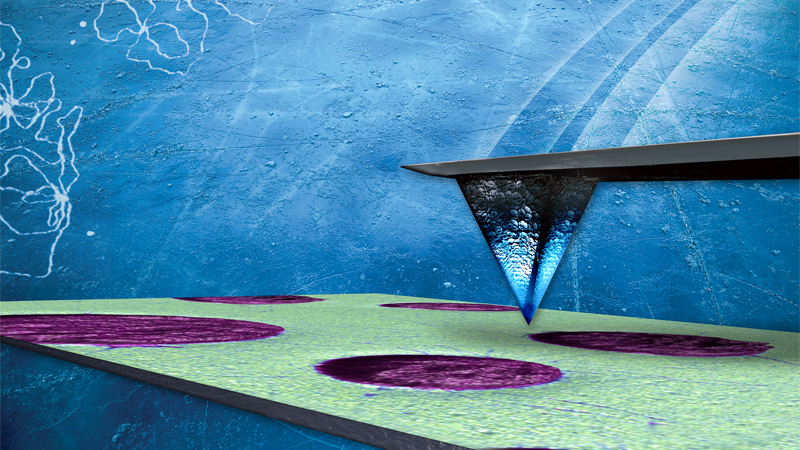Resonance Enhanced AFM‑IR (RE AFM‑IR)
RE AFM‑IR provides simultaneous topography and chemical images, and measures IR spectroscopy with high sensitivity. In this mode, the laser pulse rate matches a contact resonance frequency of the probe, improving sensitivity and data collection efficiency. RE AFM‑IR is one of the most‑published photothermal AFM‑IR modes due to its excellent sensitivity and relatively long adoption history.
In RE AFM‑IR, the pulse rate of a mid‑IR laser is tuned to match a contact resonance frequency of a soft cantilever scanning the surface in contact mode. The photothermal IR response is detected at the same frequency. To compensate for the resonance shift from mechanical property differences, a phase‑locked loop (PLL) synchronizes laser pulse rate and contact resonance frequency of the cantilever on the sample.
RE AFM‑IR should be used in situations where spectral identification is the primary goal and ease of use is a key concern. It is particularly effective for chemical analysis on very thin samples, such as self‑assembled monolayers on non‑metal substrates. RE AFM‑IR is very versatile and can be used for nanoscale chemical identification of thin films, bulk‑faced polymers, microtomed sections, and biological samples.
